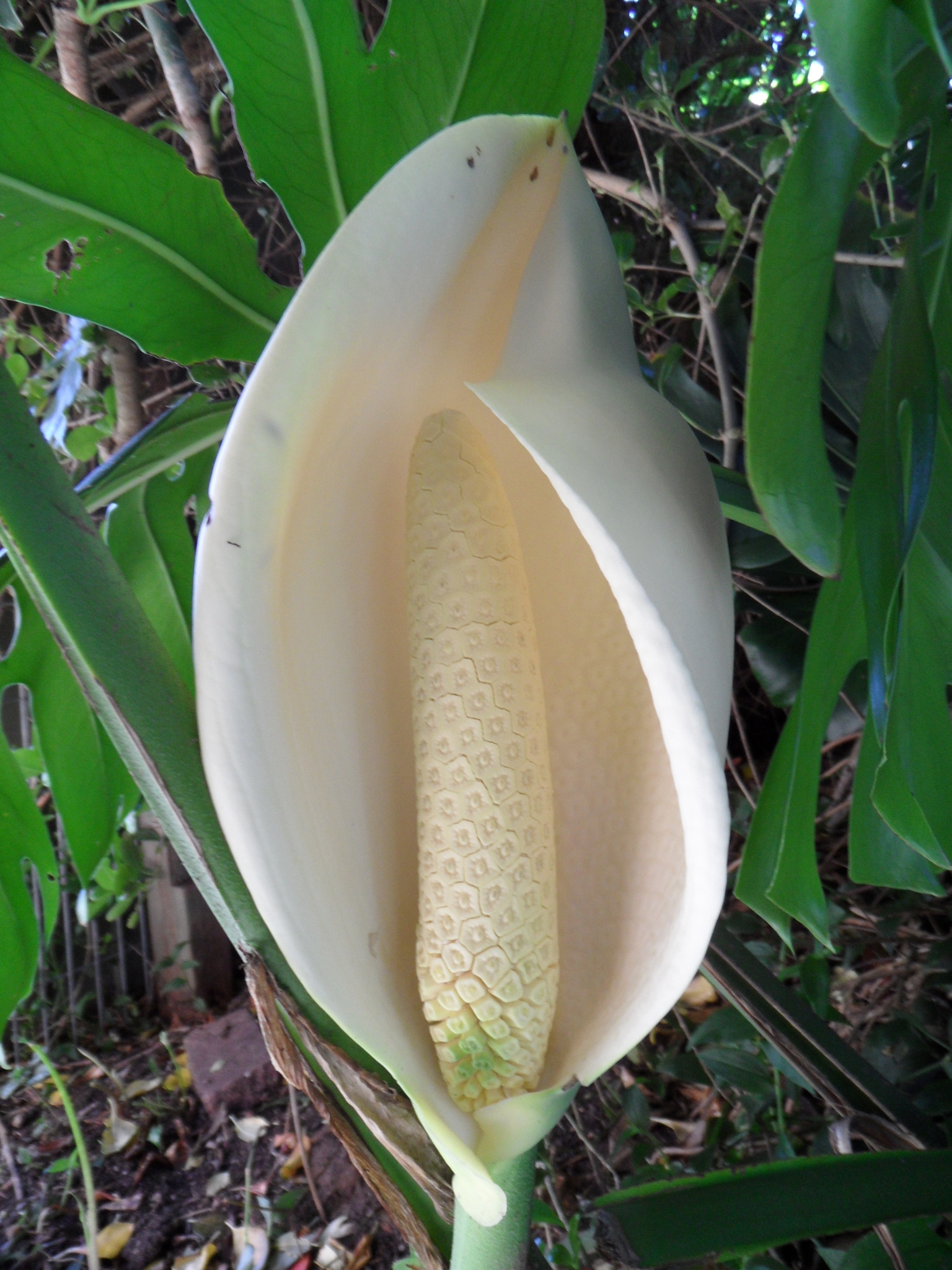
Latin monstrum – monster, marvel; possibly referring to the shape of the leaves.
Mostly large tropical vines with corky aerial roots. Leaves large, leathery, often perforated or pinnatifid, secondary veins parallel or reticulate; stalks sheathed and jointed. Spathe shed after flowering. Spadix stalkless, densely flowered, shorter than the spathe. Flowers unisexual, perianths absent; stamens 4. Ovary 2-chambered, each chamber with 2 ovules.
Widely grown, often as indoor plants, but tolerant of cool conditions, for the large ornamental leaves. Identification is complicated because the smaller juvenile leaves are often the only ones produced on cultivated plants.
About 40 species from tropical America.
Stem cuttings or occasionally by seed.
M. deliciosa spadix edible, tasting of banana and pineapple when ripe and used locally in ice cream and drinks, acidic when green and unripe.
Plant trailing or climbing, sometimes with sticky roots; leaf blade usually simple when young, pinnately lobed or divided and with holes when adult.
Madison (1977).
Source: (2005). Araceae. In: . Horticultural Flora of South-eastern Australia. Volume 5. Flowering plants. Monocotyledons. The identification of garden and cultivated plants. University of New South Wales Press.
